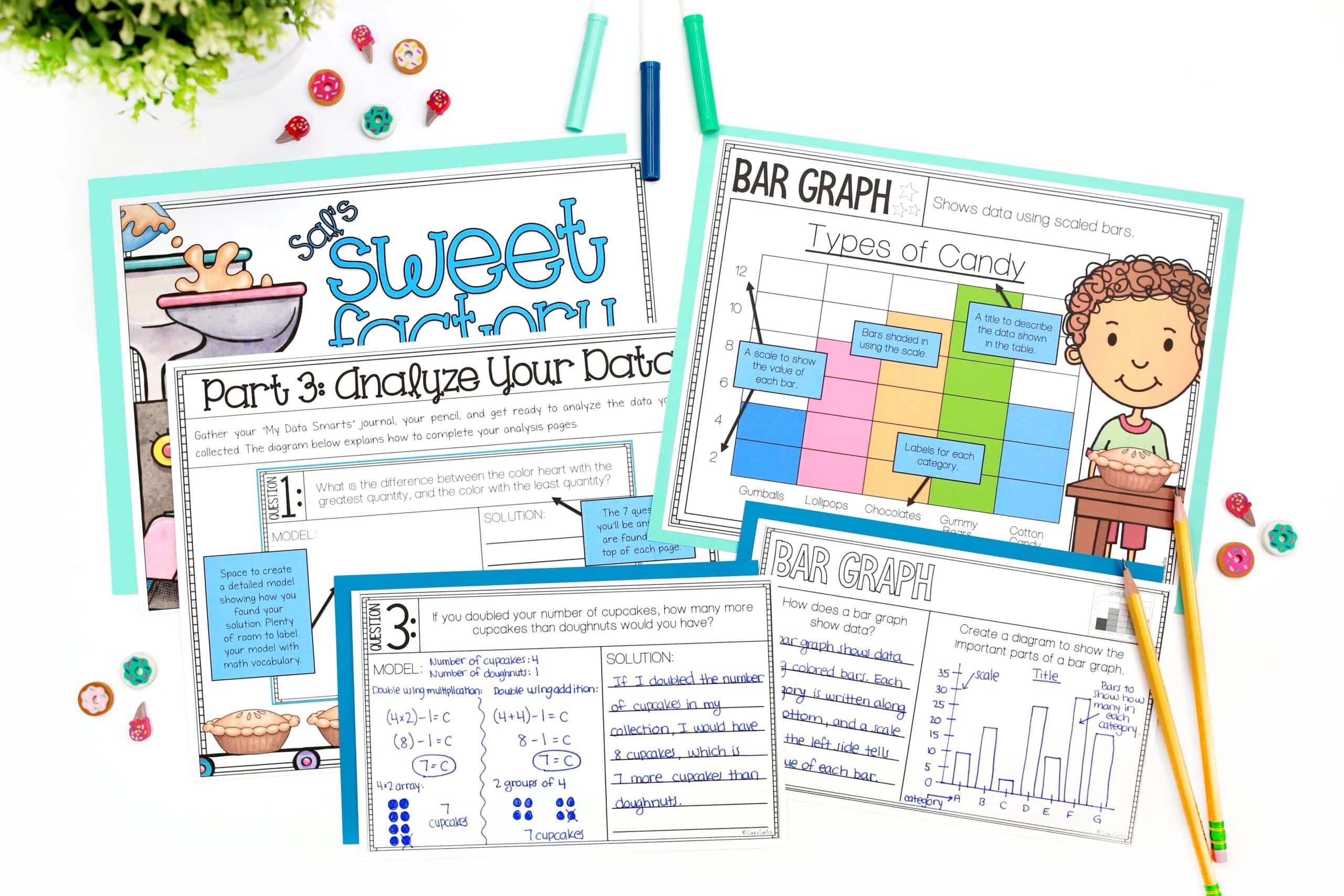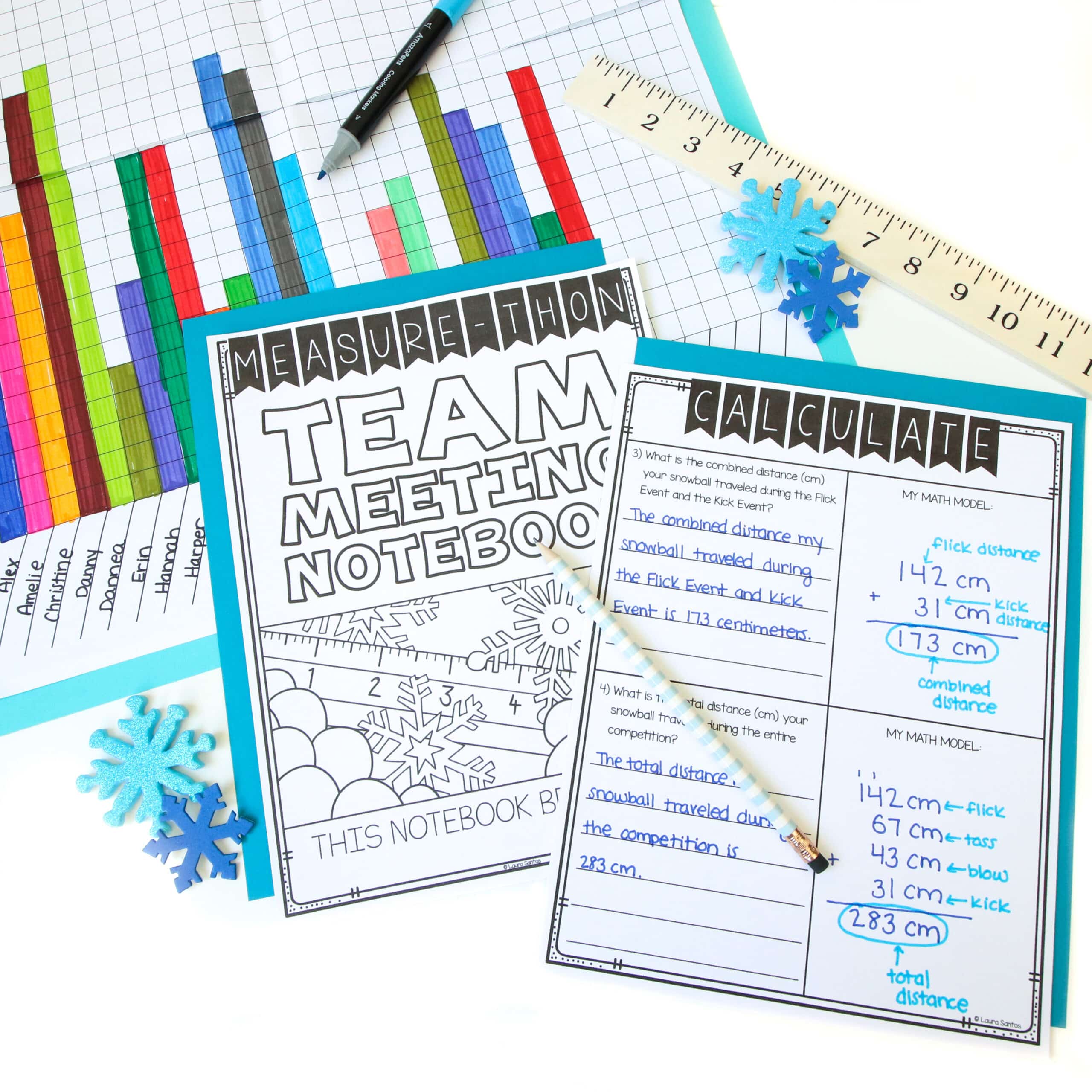If I had to guess, your telling time unit tops the list when it comes to a great divide in student understanding. Every year when you look at your pre-assessment data, it probably looks a lot like this:
- You have a few students who have been reading an analog clock since before kindergarten.
- You have a couple of students with no knowledge of what the numbers on the clock mean.
- You have a large bunch that falls in between those two ends of the spectrum.
As a result, your telling time unit requires SO much differentiation. These five must-haves make it easier than ever to achieve that level of differentiation that’s simple and streamlined.
Get A Set of These Clock Manipulatives
It’s likely your district-adopted curriculum came with a set of simple analog clock manipulatives that allow students to move both the hour and minute hands independently of one another.
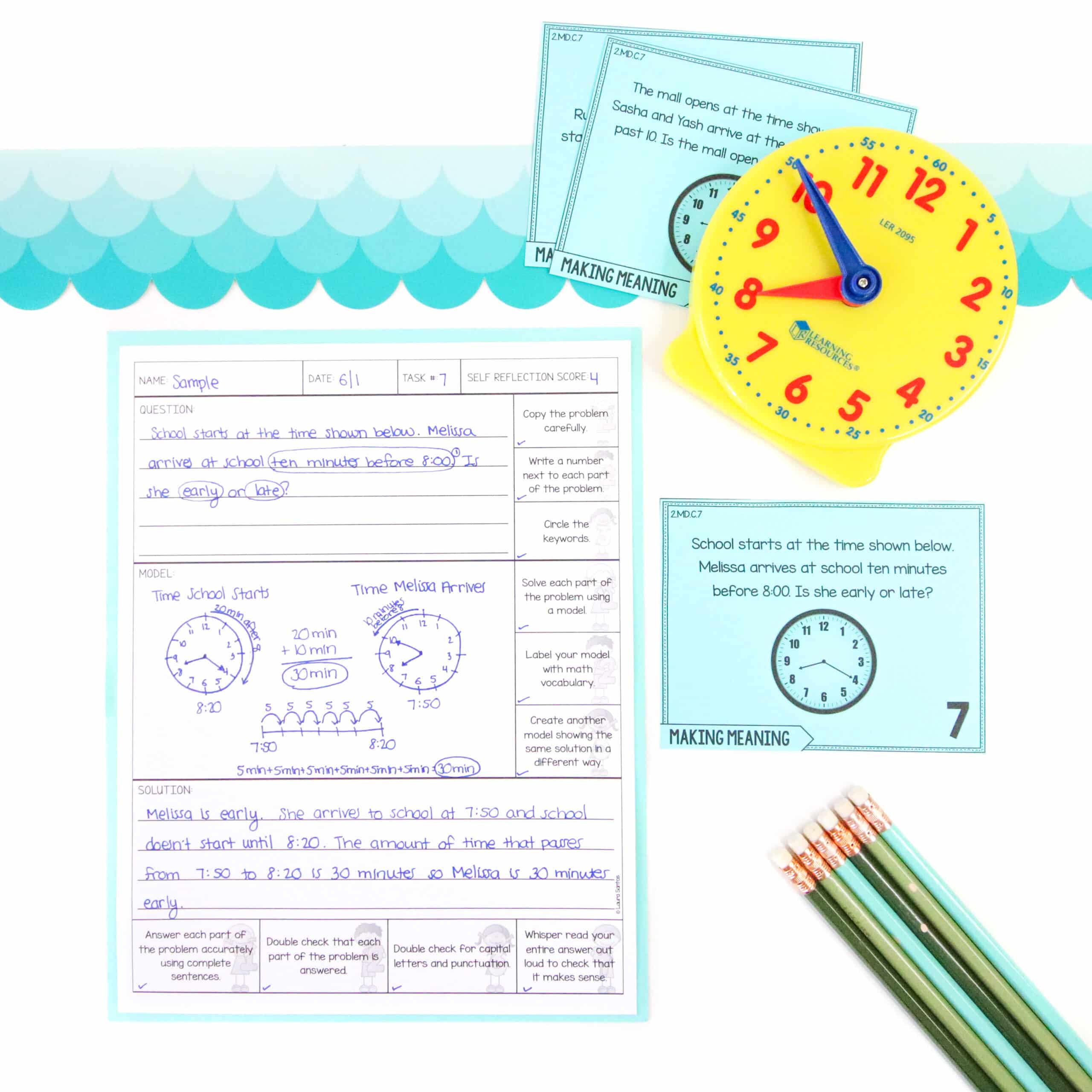
When you’re working with students who are just learning to connect hours and minutes, it’s better to have a geared clock that accurately keeps the hour-and-minute relationship when your students move the hour hand or minute hand on their clock.
These clocks are designed to make it easy for students to understand the relationship between hours and minutes.
The clock’s moveable hands are color-coded; the red hand represents hours, and the blue hand represents minutes. The internal gears are set up to maintain the correct hour and minute relationships, just like a real analog clock. By using this clock, students can develop their time-telling skills with a fun and interactive tool that provides a visual representation of the time.
Grab one set of these for your classroom this year and say hello to more aha moments and more accurate math models during your telling time unit.
Add Labels To Your Classroom Clock ASAP
Labeling your classroom clock is an easy way to build daily exposure to the concepts you teach during your telling time unit. At the beginning of the year during your back-to-school room tour, have a conversation about the labels on your clock. This will help draw students’ attention to the parts of the clock and build curiosity about how to read the clock.
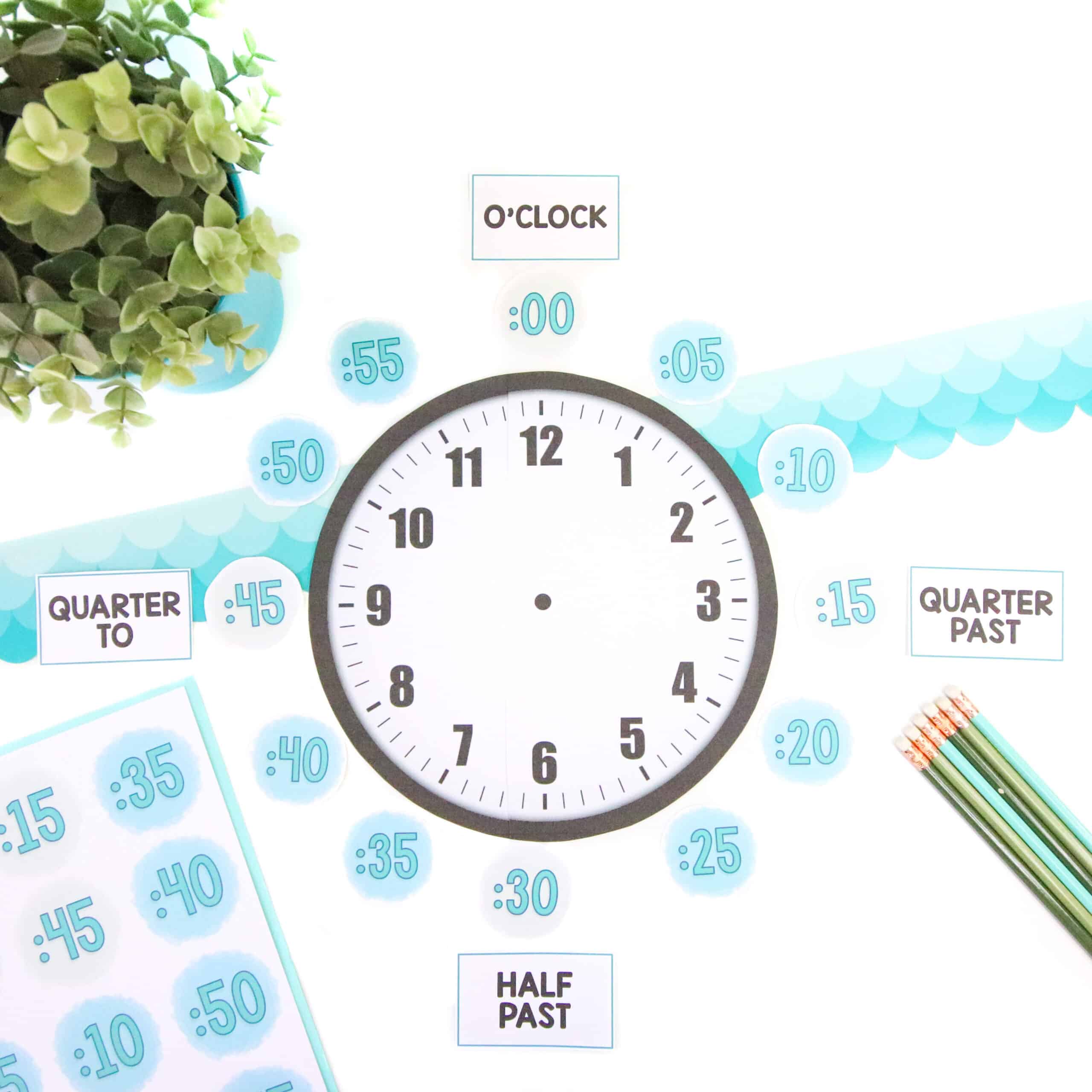
Reference your clock casually from time to time throughout the year to further build background knowledge before teaching your telling time unit. For example, if your students are going to be heading to the STEM lab in fifteen minutes, use a laser pointer to take an extra moment to talk about what “in fifteen minutes” looks like on your classroom clock.
As the year goes on, these little moments will lead to students entering your telling time unit with some solid background knowledge before your formal lessons on this standard begin, making it easier for students to achieve mastery by the end of the school year.
Use A Project As Your Summative Telling Time Assessment
Bring a hands-on focus to your telling time unit by celebrating students’ learning with a unique math project that feels like a real-world simulation. The Time of Your Life project has everything you need (including a completed sample project and editable rubric) so adding this math project to your schedule is easier than ever!
During this project-based learning (PBL) unit, your students will compete in a contest to be the next star of a new hit show, The Time Of Your Life. Each contestant must brainstorm activities they would love to do if they could have the birthday of their dreams.
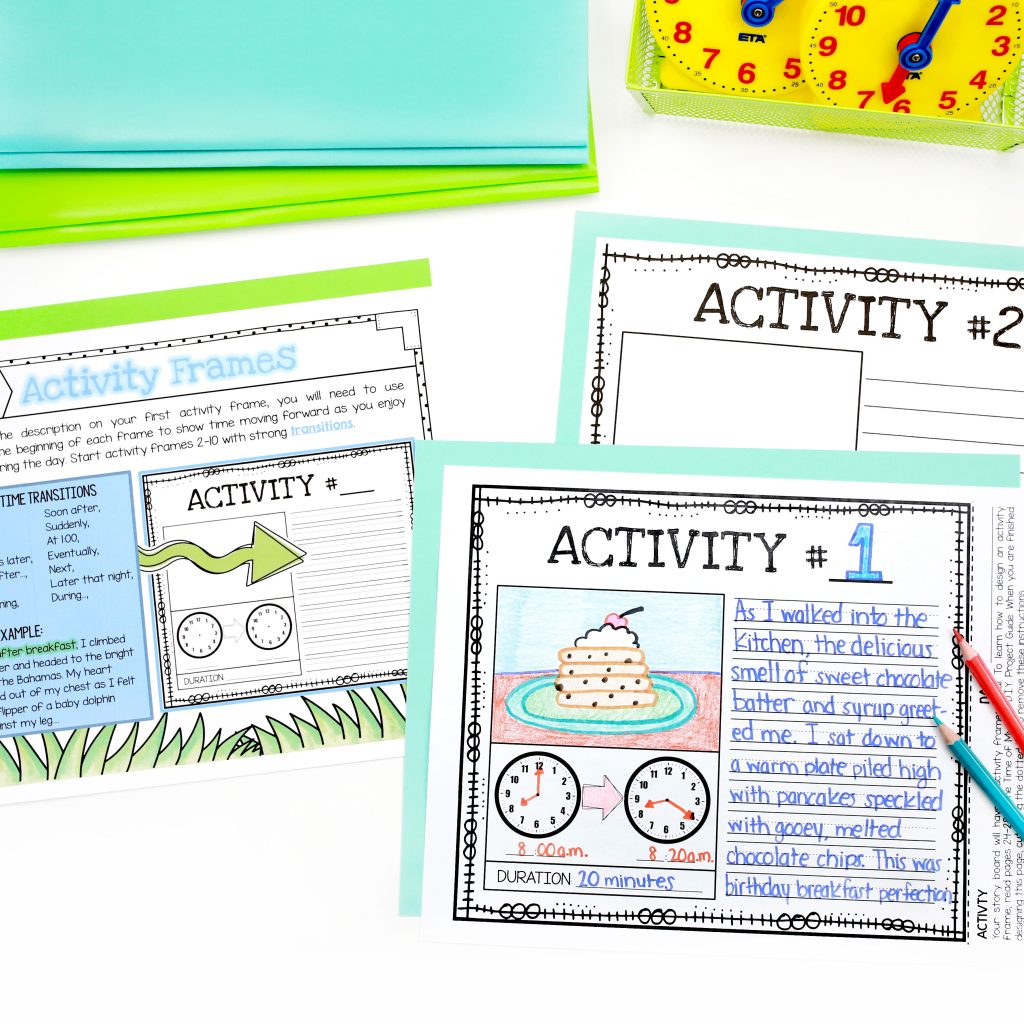
Students will take their ten favorite activities and create a day-long birthday schedule with no time gaps. They will elaborate on this schedule by creating a narrative storyboard that tells the story of the birthday of their dreams using a narrative introduction, transitions, show-not-tell descriptive details, and a narrative conclusion.
This resource makes prepping for project-based learning a breeze and makes implementation seamless. The detailed visual instructions on each page of the guide allow students to complete their unique project with maximum independence. You’ll have the time you need to teach or reteach essential telling time skills to small groups while the rest of the class works away on their project.
The format of this math simulation makes it an ideal resource for:
- An alternative assessment & culmination to your telling time unit.
- At your seat & hands-on enrichment during math workshop or guided math
- Math center work
- Parent volunteer or teacher’s aide enrichment station
- A focal point for a telling time room transformation
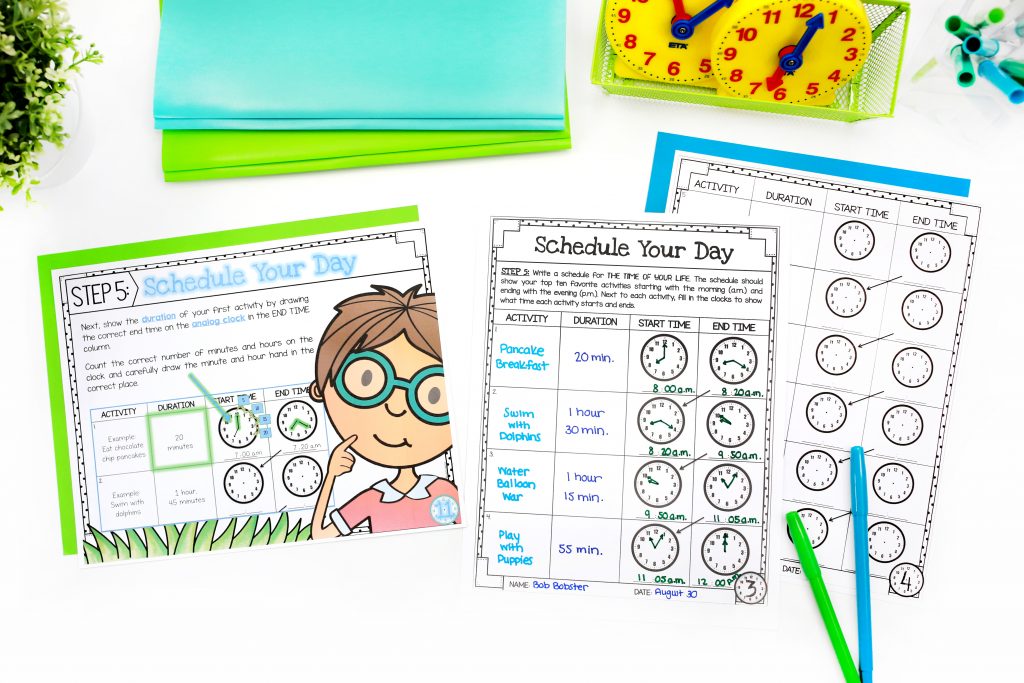
Here’s why teachers like you love using this telling time project in their classrooms:
♥ “I used this project for Open House this year. This project is HIGH engagement & rigor! It goes beyond the standard and had my students SO excited.” – Jessica C.
♥ “My students LOVED this project! They loved planning a fun day with a friend and they were able to apply their knowledge of time in a relevant way!” — Andrea C.
♥ “Great project for the students to practice elapsed time. I liked how it integrated writing with the math skills.” – Michelle S.
♥ “Your PBL activities are worth EVERY PENNY!!! I LOVE how thorough your directions are and how everything is put together. The fact that this is something that my students can work through independently is so helpful! Now I can work with my students who are struggling with time, while my others are working and creating independently. Thank you for all of the hard work you put into these PBL projects!!” – Cassie
Use Unique Games To Help Students Practice Telling Time
Math games are a seamless way to encourage students to take part in conversations about telling time and engage in problem-solving work so you get a better grasp on their understanding of this important measurement standard.
When you carefully select games that allow your students to practice foundational telling time skills while having fun & communicating with their classmates, learning becomes more effortless.
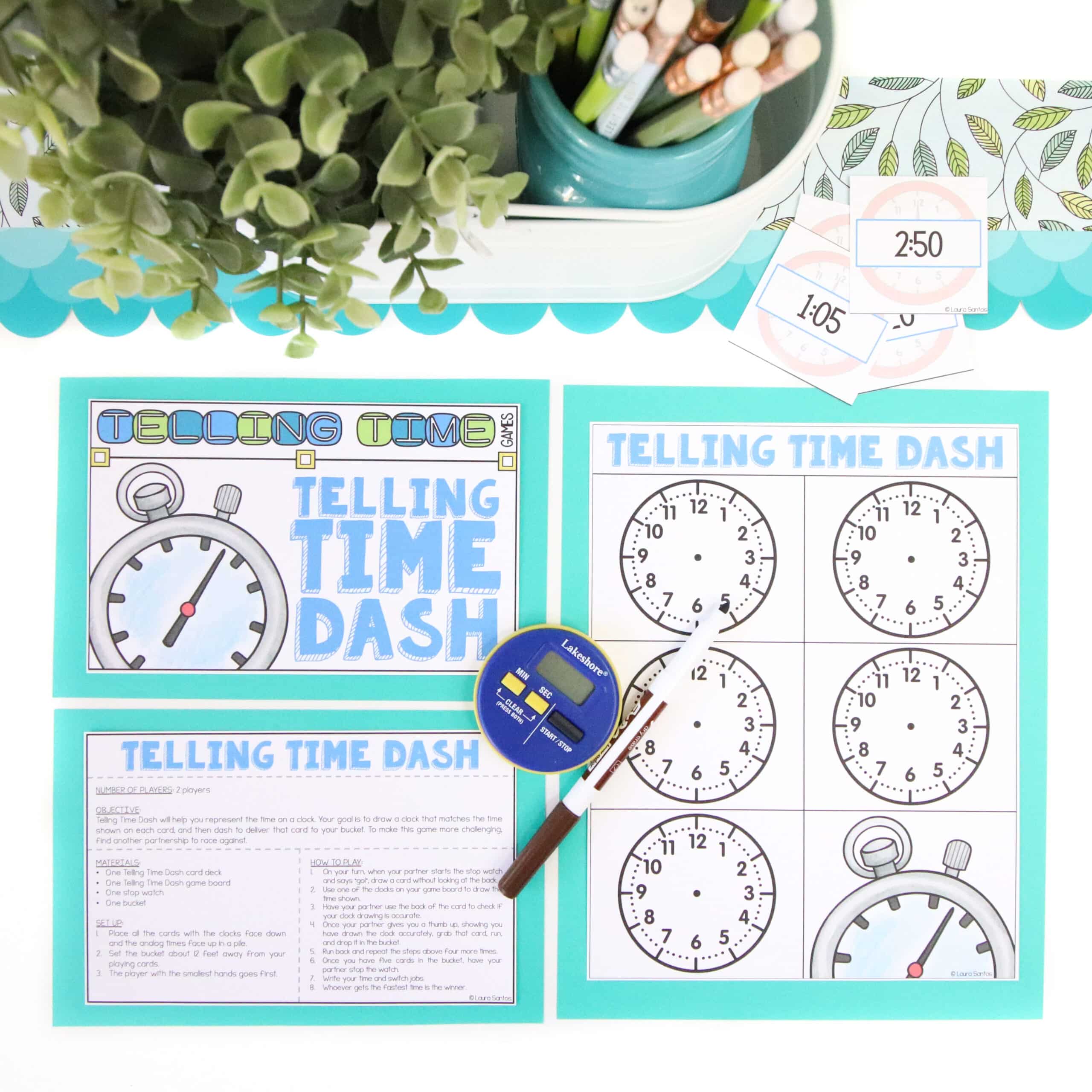
If you are looking for games that get your students up, moving, talking, and laughing, Core Inspiration’s Telling Time Hands-On Math Games are a perfect fit for your classroom.
One of the best things about these math games is you can easily walk around the room while students play and get a better idea of each student’s understanding of the skills you’ve introduced so that you can plan and adjust instruction accordingly.
No printable worksheets to add to your grading pile… just straightforward, meaningful observation data. Your students will have so much fun playing, that they won’t even notice how much “work they’re getting done” and how much data you’re able to collect!
When you use these math games in your classroom, you will effortlessly:
- Build student independence through hands-on learning daily
- Foster collaboration between students
- Help students develop math communication skills
- Develop stronger problem-solving skills in your learners
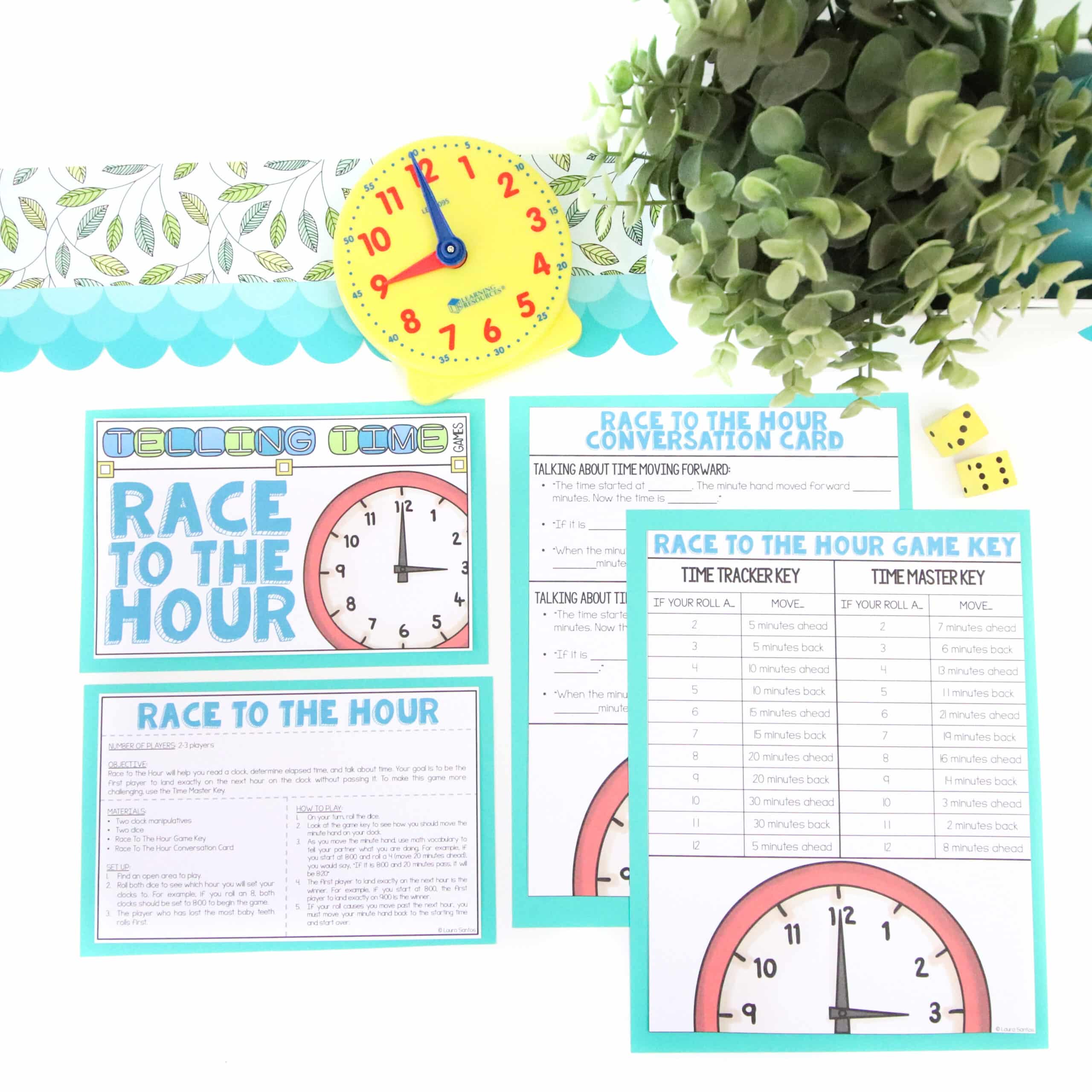
No matter how you organize your math block, these games make it a breeze to incorporate hands-on math practice in your elementary classroom. Teachers have successfully used these games for:
- Hands-on rotation for the math workshop model
- Partner work /math with someone
- Low-prep station for aides and parent volunteers
- Guided math centers
- Alternative assessment tools
Here’s why teachers like you love using these hands-on math games in their classrooms:
♥ “The different games have been a big hit in my math stations. The directions are easy to follow and the sets are simple to print out and cut. I made all the sets and levels in under an hour.” – Jacquelyn B.
♥ “Time, especially elapsed time can be such a tricky concept for third graders! These games were engaging and so helpful for my students.” – Traica D.
♥ “Laura makes the BEST math games! The directions are clear and easy to follow and they print with the label of the game so the kids have access to the directions and don’t need to ask you all the time “how to play.” They are so independent and the variety of these games is awesome!” – R.A.R.
Bring The Element of Choice To Your Telling Time Word Problem Practice
Boost engagement and problem-solving skills by providing your students with a variety of multi-step word problems written at three different mastery levels. Display a few cards from each level and have students select which type of problem they want to solve each day.
- Making Meaning Tasks are designed for students who are working to apply and master telling time concepts.
- Challenge Tasks are designed for students who are ready to take their learning to the next level and tackle more advanced, complex word problems.
- Transfer Tasks are designed for students who are ready to show their mastery of geometry standards through carefully crafted summative assessment problems. Each of these higher-order tasks requires students to evaluate, design, analyze, make connections, or find patterns while problem-solving.
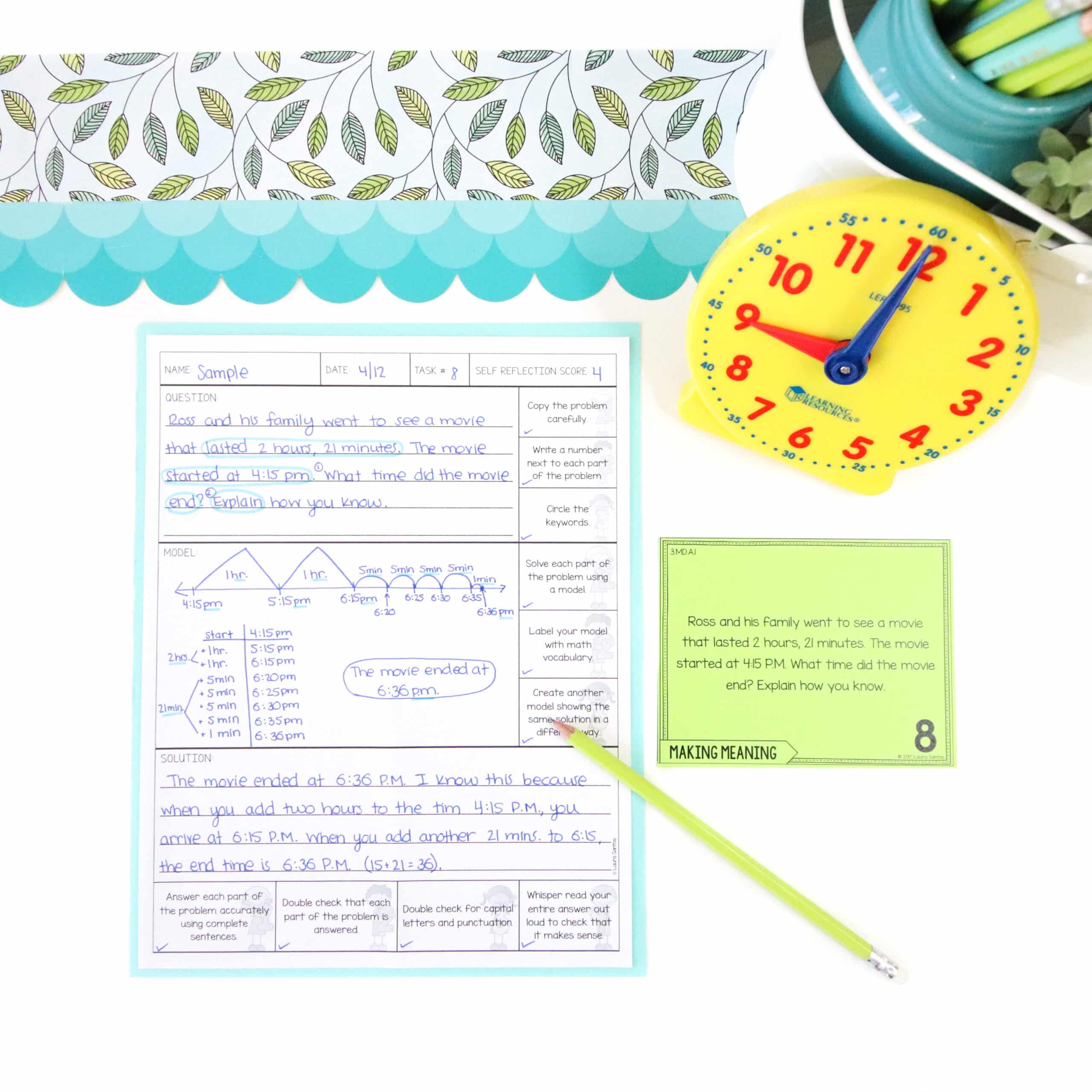
Regardless of the level they choose, you will gather information about their understanding of the time measurement skills you’ve been teaching. These carefully crafted math problem-solving tasks all require students to practice their ability to:
- Carefully analyze what math skills are required to find a solution.
- Create detailed math models that show their math reasoning.
- Record their solution in a complete sentence.
Here’s why teachers like you love using these word problems in their classrooms:
♥ “If you are teaching guided math or have a class with varied math levels, you need these cards! I love that these can meet the needs of my varied ability 2nd and 3rd grade students! My students love being able to choose their own task cards and I love that I can offer different levels of difficulty.” – Dana Q.
♥ “These are going right up in my math center! I love that the questions require students to extend and explain their thinking, as opposed to the traditional questions that they can just finish in seconds. Thank you!” – Aimee U.
♥ “I am so happy I purchased the task cards. My students are improving their math writing because of these. They are able to show their thinking with pictures, equations, and words. Thank you for an amazing product!” – R.W.
♥ “This is a great way to challenge students to think about their reasoning when it comes to math. The cards are perfect and will be a great asset to my math centers!” – Katie H.
THE EASY BUTTONS For YOUR TELLING TIME UNIT
With these five must-haves, you can provide effective differentiation to ensure all students can grasp the concepts of telling time. To make your teacher life even easier, I’ve linked all five of the resources I’ve shared in this post in the list below. I hope your telling time unit is more fun, easier, and more effective than ever before!


